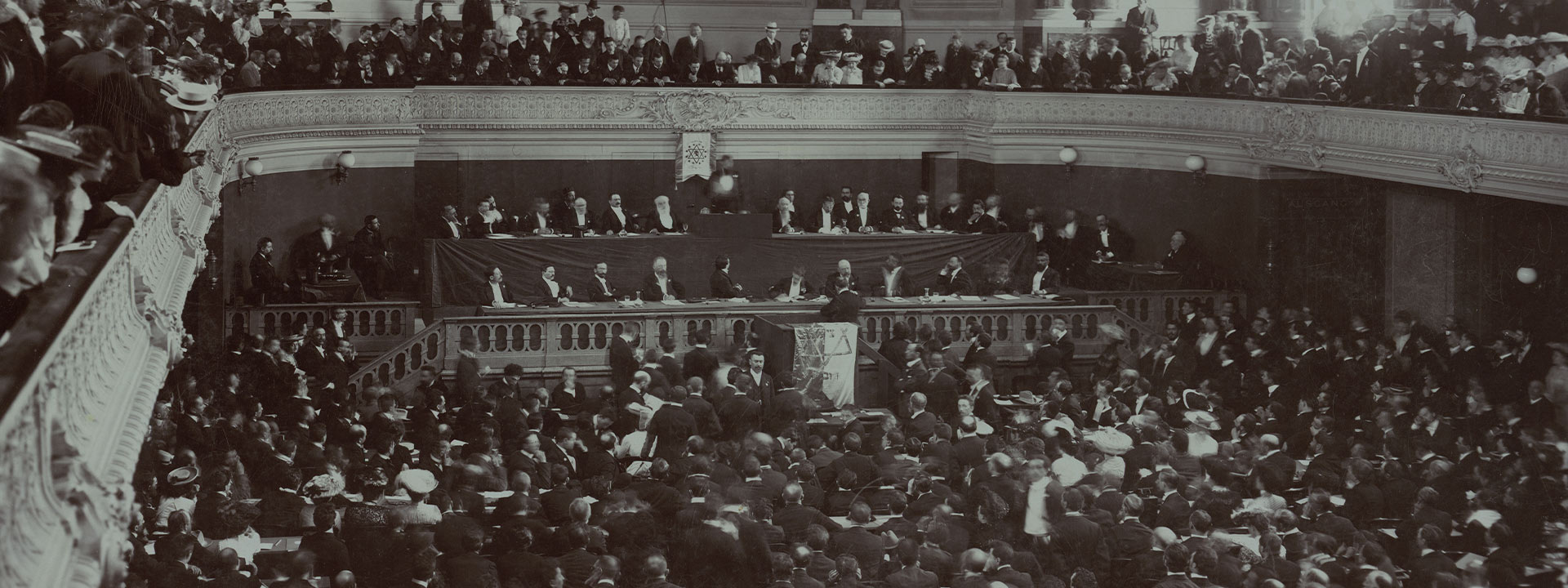The history of Zionism is a cross section of dramatic efforts intended to advance the realization of the Zionist vision of the establishment a Jewish state. These endeavors were the result of a combination of persistent Zionist action and global developments, which sometimes led to opportunities for action and sometimes to emergency and rescue operations in response to adversity and tragedy.
One of the first milestones was the establishment of the Hovevei Zion movement in 1881, which united various Zionist organizations under one umbrella. A year later came the “First Aliyah,” followed immediately by the “Second Aliyah,” the first waves of mass Jewish immigration to the Land of Israel after 2,000 years of exile. In these two waves, which lasted from 1882 to 1914, about 65,000 Jews immigrated to the Land of Israel. They established the basis for the new, urban and rural Hebrew settlement.
In 1897, in the middle of the First Aliyah, and against the background of the multiplicity of Zionist streams, the first Zionist Congress was held at the initiative of Theodor (Binyamin Ze’ev) Herzl. The Congress, which convened every year or every two years, passed resolutions that outlined the Zionist movement’s path of action. One of the controversial issues that captivated the Congress and the developing Hebrew community was the “War of the Languages”, waged between those who supported instilling the use of the revived Hebrew language and those who opposed it.
From the Balfour Declaration to Illegal Immigration
In November 1917, Zionist activity recorded an unprecedented achievement with the publication of the Balfour Declaration, in which Britain declared its support of the establishment of a national home for the Jewish people in Palestine - the Land of Israel. Public recognition of the Zionist idea by a world power aroused great hopes in the Zionist world.
In the wake of Hitler’s rise to power and British restrictions on immigration, the strategy of illegal immigration was advanced, and lasted from 1934 until the establishment of the State. This took place alongside various political efforts during the same period on the part of the Zionist movement. Despite great risk and violent confrontations with the British, approximately 120,000 Jews were clandestinely brought to Israel. Within a few years of the establishment of the State, hundreds of thousands of Jews immigrated to Israel. In the attempt to provide quick shelter, about 130 transit camps known as Ma'abarot were built, which housed immigrants in overcrowded conditions and without adequate sanitation. By the mid-1950s, most immigrants had moved to permanent housing, but the camps were etched into the public consciousness as a controversial undertaking.
The National Library maintains many collections documenting the history of Zionism and its various projects and periods from the beginning of Zionism to the present. Periodicals, photographs, letters, testimonies, posters and other archival materials collected in the Library offer interesting and informative human and scientific insights on the many, turbulent and complicated chapters that led to the establishment of the State of Israel.

